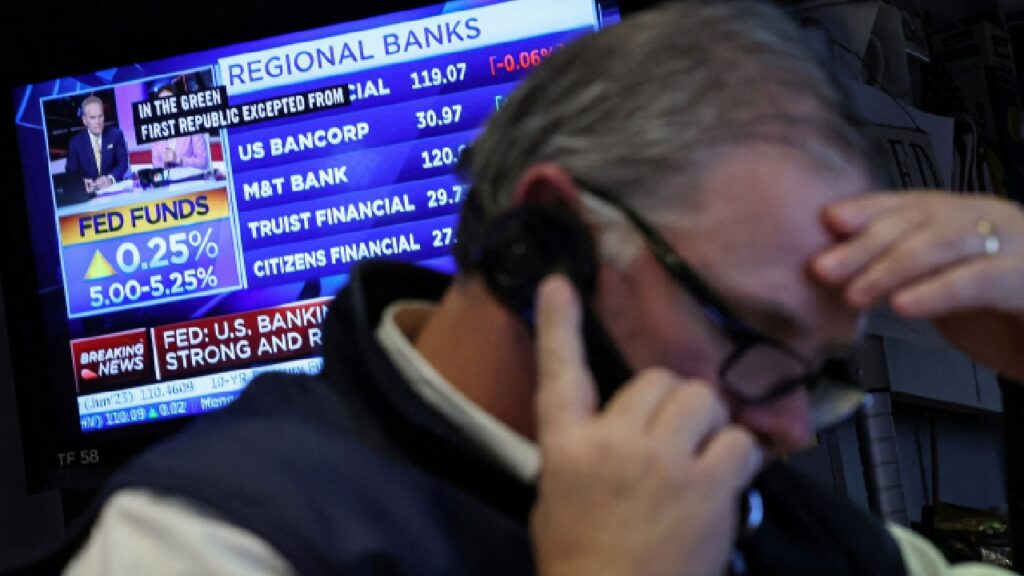Markets
US Stocks Investor Concerns Boost Bond Prices
Persistent anxieties about regional banks and the economic outlook continued to grip Wall Street on Thursday. As a result, US stocks fell, while government bonds and gold rallied. The S&P 500 slipped 0.7%, and the Dow Jones Industrial Average declined 0.9% or nearly 287 points. The Nasdaq Composite lost 0.5%. This comes almost two months after Silicon Valley Bank’s collapse, and concerns about potential bank failures have persisted since then. In addition, investors assessed the fallout from Wednesday’s Federal Reserve meeting.
The yield on the benchmark 10-year U.S. Treasury note fell to 3.350% from 3.401% on Wednesday, reflecting demand for safer assets. Meanwhile, gold settled near a record high at $2,048.00 a troy ounce. The shares of three midsize lenders, PacWest Bancorp, Western Alliance Bancorp, and First Horizon, all fell more than 30%, and a broad index of regional banks dropped 3.5% to its lowest level since 2020.
On Monday, after regulators seized First Republic Bank and sold the bulk of its operations to JPMorgan Chase, declines in regional banks were generally modest. However, on Tuesday, declines became more acute, sparking broad losses in stocks and gains in government bonds.
Get Wall Street Journal 2-Year Print Subscription for $480
The market continued to slide on Wednesday, even after the Fed hinted that it could be done raising short-term interest rates for a while. Some investors said Fed Chair Jerome Powell might have unsettled the market by still leaving the door open to future rate increases to combat inflation and not expressing greater concern about the banking system.
Tom Garretson, senior portfolio strategist at RBC Wealth Management in the U.S., said, “With the Fed pushing forward with the rate yesterday, I think they kind of are at risk of pushing things a bit too far.”
Christopher Smart, chief global strategist at Barings, said he expects stocks and bonds to bounce between gains and losses in the near term as bouts of anxiety are tempered by solid economic data. But he acknowledged that investor confidence was proving fickle at the moment, with seemingly one bank after the next coming under intense selling pressure.
Get Wall Street Journal 2-Year Print Subscription for $480
As of Thursday, 80% of companies in the S&P 500 had reported fourth-quarter results. Of those companies, 78% had topped analysts’ consensus earnings estimates, slightly above the five-year average of 77%. In aggregate, companies were reporting earnings that were 7.1% above estimates, the biggest margin since the fourth quarter of 2021. However, companies in the S&P 500 are on track to report a 2.7% pullback in quarterly profit year over year, according to a blend of actual results and estimates for those yet to report, marking a second-consecutive quarter of declining earnings.
Investors on Thursday added to bets that the Fed would cut interest rates later in the year owing to an anticipated slowdown in economic growth and inflation. The yield on the two-year U.S. Treasury note, which is especially sensitive to the near-term interest-rate outlook, fell to 3.727% from 3.939% on Wednesday, according to Tradeweb, marking its largest decline since March 17. Interest-rate futures indicated in the afternoon that investors think there is a greater than 50% chance that the Fed would cut rates by the end of its July meeting.

